Hello,
In my experience polyps are unlikely in a cat this age. I would ask for a few rounds of either an antibiotic or anti inflammatory to see if these help. In cases where clients struggle with the cost of diagnostics we often try various treatments to see if we get a favorable response. You can also ask for a sedated exam to look for a polyp behind the soft palate. Like I do in the video.
I hope this helps.
My cat has been having audible breathing noises for a few months. No open mouth breathing, just audible through the nose, on and off throughout the day. She’s developed some weird other noises especially while sleeping or falling asleep some snoring, random sneezing as well. She isn’t overweight or old.
We’ve tried antibiotics but it didn’t help. The vets are quoting between $2-10k for just imaging for polyps, not even removal, if they see any. It’s impossible to afford it. She’s eating and playing and acting normal otherwise. I’m wondering what it can be, is it likely polyps and if I don’t go into debt to see, am I going to make her like unliveable?
I’m wondering if I can even rent a car and come down to a cheaper clinic in the US (I’m in Canada) which may be cheaper than doing it locally. There are very few low cost vets here and they only work with people on welfare so it wouldn’t apply. There’s a huge gap between people who are on assistance and people who aren’t but still can’t a afford $10k in imaging.
Comments
My 11 year old Cat has slowly developed noisy breathing. For a long time it was bearly noticeable, then over time I noticed she was getting worse, a snoring/snorting sound when sleeping and occasionally after playing or running. A short time after that I noticed she was having trouble eating, specifically swallowing. That was when I knew somthing was definitly wrong. I callled my vet and explained everything, they got us in, the vet checked her over and said everything seems fine.. not an emergency. Told me it was potentially a polyp in her throat, but said they cant do “scoping” at that location and said I would need a referral to another clinic. This annoyed me because I explained the symptoms on the phone while booking and they didnt mention their limitations. So they charged me ($200) to basically tell me they cant help. Luckily my cats symptoms subsided a bit while we waited for the referral. Some days are worse than others. This is when I found Krista Magnifico’s video removing a cats polyp!! It made me feel so much better know it might just be that simple, hopefully. I finally got the call back from the referral, they said they need to do a consultation first before anything else ($330) then after that they would need to sedate my cat, do a CT scan ($3000) and if my cat needs surgery I would need to come back, sedate the cat again and surgery would be roughy ($4-5000) This was devastating to hear…. now I completely understand vet bills arent always cheap and working people need to be paid, but this seems excessive… Any advice is greatly appreciated. I dont know what do to at this point…
Comments
Not sure if you answer this but had a question about our 5 year old cat. Since November she has been experiencing a fair amount of nasal discharge. We tried to rounds of antibiotics, a flush, and the vet searched for a polyp using a spade hook on her soft pallet while she was sedated. The vet was unable to see a polyp and the nasal xray didn’t show much either. A month later we saw no improvement on the nasal and over the past ten days our poor cat has been breathing terribly. When she is standing up and moving around it is clear her breathing is obstructed and it sounds like she is snoring. We have noticed a large decrease in her nasal discharge but her breathing is just awful. She is still eating and drinking as normal. We have been referred to internal medicine in St. Louis but aren’t excited to spend $2-3K for a CT Scan and scoping. Is it possible the poly behind her soft pallet has grown since they first looked for it or could a polyp be some where else? Do you think a CT scan us necessary or should the scope do the trick. We love our cat but are reluctant to spend $3K on her only to find out the couldn’t do anything to help her.
Comments
Hello,
We have a cat who has been sneezing, making noise when breathing, and has had discharge (sometimes bloody) from a nostril. She has had these symptoms for several months and they seem to be getting worse. Our regular vet has treated our cat with antiviral, antibiotic, and steroid medications. The medications have not helped.They are not sure of the cause of these symptoms, but a visiting vet suggested our cat may have nasal polyps. We were referred to a specialist vet who suggested testing (biopsy, CT scan, X-ray) with a quoted price of $8,000, which is more than we can afford. We saw your video on nasal polyps and wanted to see if you are able to help us and our cat, Koshka. Thank you very much!
Comments
Colin to Dr. Krista : May I pick your Brains?
Dear Dr. Krista,
I’m writing to ask your advice about a stray cat I found last month. See images attached.
But first I want to thank you for the polyp videos you made, which were refreshing, as well as impressive.
One of my strays was snoring, so I was eager to pluck out a polyp hiding behind his soft-palate. (He didn’t have one, but I’m gratefully alerted for the future.)
Last month I found a stunted stray ginger cat outside a 7/11 in North Thailand, where I’m a self-financed Christian missionary.
Can you help me diagnose, and treat the problem?
At first I thought it was simply FVR / Calici and chronic snuffles.
But when I opened her mouth, she had only 4 teeth in her head!
Yes, she had calici tongue-ulcers, but little sneezing, no ocular discharge, and has been eating like a horse from day one. She’s happy and bright in herself, apart from the ugly sore nose.
Her mandibular Ln were big and hard, so I put her on antibiotic tablets, with a little dexamethasone (actually 2.5mg Prednisolone tab. daily.)
Then after a week or so I sedated her, and examined her mouth more closely, no observable polyps (drat!) but one of her molars was loose and covered in calculus, so I pulled that one out, and cleaned up the remaining molar and two premolars, otherwise the poor thing would have zero teeth.
There was of course gingivitis and pharyngitis, but pink, not red like “dragon-mouthed cats” on dcf.
For the last month I’ve given her a course of floxacilin (30 days) with amoxycillin, and tried all sort of creams on her nose and lower eyelids which. as you can see, are raw and sore.
Her Ln are almost normal now, +but that nose is no better+, and she tries to rub as though it is itchy.
(I made up creams mixing; 10% flours of sulphur, betamethasone, ivermectin, and vaseline)
There’s a temporary lessening at best, but no lasting improvement.
So what is your differential for her?
In NZ where I locummed, cat leprosy was common (Mycobacterium from mice and voles) so that was my diagnosis, but the floxacillin has made no impression.
I’ve trimmed her claws and taped her fore paws to stop her making her nose raw.
I’m stuck, and thought of asking you Doc.
I’d guess she’s 3-4 years old, confident, unvaccinated, entire, lived wild all her life eating left over fast food, and possibly DCF from neighbours.
Since October I’ve been feeding her raw chicken frames, tinned sardines, vitamin syrup, and no DCF.
She loves raw chicken :), and eats whatever I put in front of her and still looks for more.
Apart from her nose you would not think she was ill in any way.
Thanks for your advice.
Colin
PS. For some reason, Depo-medrone has been taken off the market here, not even local vets can get hold of it.
Colin Melbourne English missionary in Asia
https://www.born-again-christian.org/news/
https://www.born-again-christian.org/news/ไทยคริสเตียน/
https://www.born-again-christian.info/aboutus.htm
https://www.born-again-christian.com (Asian languages)
Comments
Hello all,
Writing in with an agonizing and drawn out struggle with my cat Petra..
I rescued a feral kitten in 2022 who developed cryptococcosis the following year – confirmed through a biopsy.
She has the cutaneous and nasal form, and while we tried itraconazole for a few months, it did devastating damage to her nose.
Vet switched her to fluconazole 37.5 mg (at that time my cat was just over year old and weighed 3.5 kg) once a day… and the symptom relief was remarkable!
Within a month, her nose was much less inflamed and starting to look “relatively normal” again, and best part was she was no longer having difficulty breathing, no stertor or mouth open.
Her many crusty skin lesions and nodules under the skin cleared up miraculously!
But, the success was short-lived, because a couple of months later she developed a big bulge on her abdomen/side under the skin – which eventually erupted. She had had several of these nodules and lumps, that ulcerated last year but the fluconazole seemed to clear them all up. Until now. I was so disheartened, to say the least.
The crater-like ulcer got infected and our vet (RCVS licensed in UK) decided surgery was the best option.
We did this, and the vet found more ulcers which needed to be removed to patch up the skin. It was a horrific looking surgery aftermath when she came home.
Petra required to wear a cone for 3 weeks after her surgery so she couldn’t touch her healing wound. It got infected anyway, and this increased her “cone suffering” duration.
The impact of many vet visits, surgery, and follow ups while the vet checked if the wound was healing and if the stitches could be removed, was quite an ordeal for Petra.
She gets very stressed and is difficult to put in a carrier. I feel that the stress of cone duration + all the vet trips triggered an inflammatory response in her and her nose started showing signs of the fungus again. Inflammation, distortion and worst of all the stertor was back.
The vet increased her fluconazole dose to 75 mg a day (37.5 mg morning, 37.5 mg evening). This had no noticeable effect and her nose got more inflamed as each day went by. 2 months later and her nose is worse than ever and the tip is so inflamed. With the loss of scent and ability to breathe sufficiently, she’s become reluctant to eat more than half a tin of food a day. Sometimes all she will eat is half a tablespoon and then runs off, upset.
Petra’s vet wants to put her on a maximum dose of 150 mg of fluconazole, daily, before assessing her quality of life and potential euthanasia.
I decided to try homeopathic remedies first, while continuing 75 mg a day of fluconazole) but it doesn’t appear to be helping 3 weeks in.
I’m concerned about continuing vet interventions, because Petra is so stressed by them, and at 150 mg a day she will need to see the vet frequently and likely need blood tests. At 150 mg a day, it’s also a non sustainable chunk of my monthly expenses (taken from diminishing savings), and she is not my only cat or responsibility… this could go on for years..
If she has no positive response (symptoms relief) at 150 mg, the vet is out of ideas other than euthanasia. I live in Bahrain and the options for treating this fungus are very limited.
They have not seen it in over 40 years of vet practice, so this is a first time.
I love Petra and it’s been hell witnessing her struggle to breathe for over a year. That’s what makes me panicky and consider quality of life, if she cannot be cured or brought to a level of management where the fungus doesn’t impede her breathing.
I need advice from a community of animal lovers, vets, who can also understand and take into consideration her temperament and adverse reaction (inflammation) to vet visits.
I was really hoping the homeopathic medicine would help and the practitioner I found has many years of successes working with animals. It’s either the wrong remedy, or just going to take a long time. In the meantime, in my opinion, my cat is suffering and struggling. She takes gasps of air every so often and her mouth is slightly open while she makes a snoring sound as she tries to breathe through her blocked airway. She has lost weight as she eats much less now. She was 4.7 kg in April before her surgery. At the beginning of June she was 4.5 kg and now she is closer to 4 kg.
Also within the last 2 months, her eyes have gotten affected by the nodules. One above her right eye, under the skin and affecting the bone. The other is in her left lower eyelid.
During this whole ordeal, her right lymph node under her jaw has been the size of a golf ball.. and the left one also swelled up a few months later. But that side seems to have gone down.
Any help or advice on what to do.. would be very much appreciated.
Pics from most recent (today June 3rd 2024) to last year before fluconazole and way before, late 2022, when she was a kitten.
Comments
Hi Dr. Magnifico,
Our adopted cat (former stray cat, now 100% indoor) has always shown all of the signs of a nasopharyngeal polyp (about 4 years now). I didn’t know what it was until I saw videos of cats with similar breathing noises and eventually saw your YouTube polypectomy videos.
Three short videos of his breathing sounds (turn up your volume) follow:
Called our vet for a surgeon referral, but they’ll only refer for a CT scan ($2000) before they’ll refer to a surgeon. Surgeon’s websites all indicate that they will only accept appointments by referral from a general Vet, so I can’t just make an appointment for examination by a surgeon (which I’m happy to pay for).
Bottom line, looking for a second-opinion / consult (happy to pay!) on whether it’s really necessary to do a $2000 CT scan *before* being referred to a surgeon for (a probably $2000) surgery. I’d rather just have a surgeon put the cat under anesthesia, go in, look for the polyp, and remove it if they see one. Happy to pay $2000 for just that surgery, even if it turns out there’s no polyp.
Thank you in advance for any response.
Comments
Seeking Diagnosis/Treatment for Possible Nasopharyngeal Polyp in Cat
Our 5#, 18 mo old cat has been having breathing difficulty for about 6 months. We’ve been to two “regular” vets and one specialty vet. The “regular” vets have done chest x-rays and bloodwork trying to diagnose. We’ve been on multiple rounds of antibiotics, several steroid shots, and a few breathing treatments. The first vet suspected asthma, but none of the meds worked. The second vet suspected lung infection, but again, none of the meds caused any improvement. The cat is acting fine, eating and eliminating normally. No nasal discharge. Sounds like she’s snoring all the time.
We saw a specialist today. She determined that the cat isn’t able to breathe thru her nose much, if at all. We are waiting on lab results for a fungal infection. The next step she suggested would be for CT scan and rhinoscopy to check for foreign body, polyp, or other physical abnormality. I’m ok with sedated imaging, but their estimated cost for that is $4,000. I called MS State University Vet Clinic, and their estimate was also in that range. We’ve already spent hundreds trying to diagnose and treat this. I’m ok with spending more but not $4,000.
Can anyone suggest a vet in the Tennessee, Arkansas, Mississippi region that we can try?
Please help my rescue kitty with a polyp in his pharynx!
I recently took in a rescue kitty. He was treated for upper respiratory infection. However, it keeps returning and he always sounds like he is snoring. The vet he was seeing suspects a polyp. However, he isn’t able to remove it. I can’t afford to take him to specialist. Please help! I will travel to you to have him seen.
Comments
We have a very sassy beautiful 12 year old orange female tabby named Nala. She has been perfectly healthy until about a year ago when she started to sneeze a lot (that rapid-fire sneezing that cats do) and she started to make a snoring sound when she breathes. We initially thought it was just allergies but it didn’t get any better after several months. We took her to the vet and he diagnosed her with herpes and prescribed Chlorpheniramine 4mg crushed in her food. I’ve been giving her this for at least 6 months now and she has not improved. The sneezing has decreased, but the “snoring” has not improved at all. Searching online, we found a video of Dr. Magnifico performing surgery on a cat that had a nasal polyp and we are wondering if this may be what she has. The symptoms all seem to be the same as what she has been dealing with. So we’ve been searching for a vet in our area that performs this type of exam and surgery, and we have found this to be very expensive ($2000-$5000). She is otherwise a very healthy girl, she eats, drinks, uses litterbox and plays and snuggles all like normal. She has lost weight, but now seems to be putting it back on slowly. Dr. Magnifico’s office is only about an hour away and we would absolutely drive down to be able to have her exam Nala and if it is a reasonable price, have her remove the polyp if this was the diagnosis.







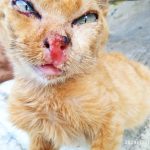
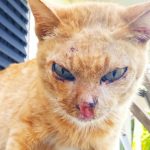
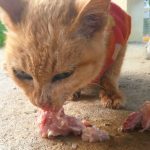
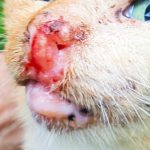
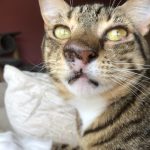
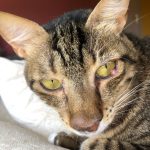
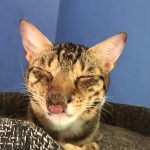


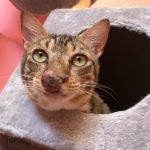
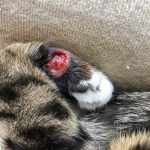
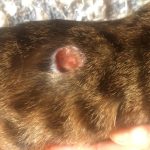
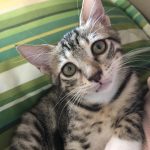

Hello,
Without knowing more details I would say keep looking into finding a place that will help you affordably. I do t know why vetmed has gotten so unkind or unwilling to help people and pets like you, but there are still places and vets who will offer care to help patients. Please keep asking for help. I have lots of videos on polyps and I write a lot about them. In almost all cases I recommend a n exam under general anesthesia to look behind the soft palate. I also take skull X-rays and flush the nares if I don’t find one.
Polyps are most commonly found in young cats. It can be a life saving procedure to remove them. I charge about $500-700
Hi Krista,
Where are you located? If I were able to get to the States (I’m assuming you are there) would it be possible to book in with you? There are no lower cost vets here I’ve been looking for a long time and am willing to travel, at this point it seems likes my only option, or not doing anything.
Also – what about nasal polyps?